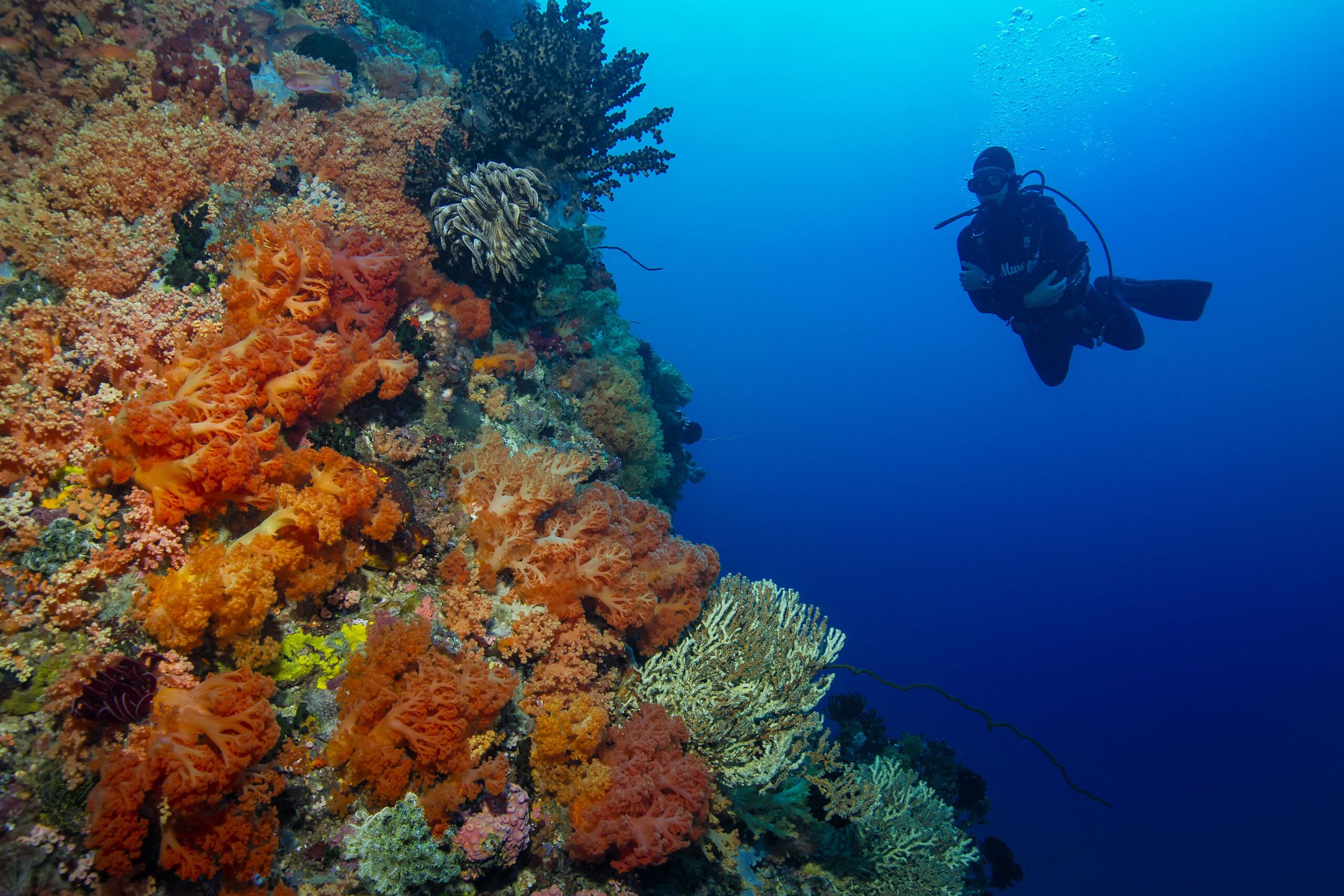Rainbow on the Reef
Here in North Sulawesi our dive sites and reefs are awash with color – every color of the rainbow in fact and to prove it we have chosen our favorite fish and critters which represent each individual color. Here are 7 very good (and very colorful) reasons to come and dive on the stunning reefs around Bunaken, Manado and Bangka.
Red
Pygmy seahorses (Hippocampus bargibanti) are a favorite with all divers. These cute critters’ camouflage is almost perfectly matched to their host sea fan which together with their small size (up to only 2cms) makes them very difficult to spot. The bodies usually appear a pinkish hue with the wart like spots, known as tubercles, being red. The pygmy seahorse actually takes its color and warty-like texture from the sea fan it inhabits and we sometimes see several individuals on one fan. The best dive sites for spotting pygmys are the sites around Bunaken Island where there is an abundance of sea fans.
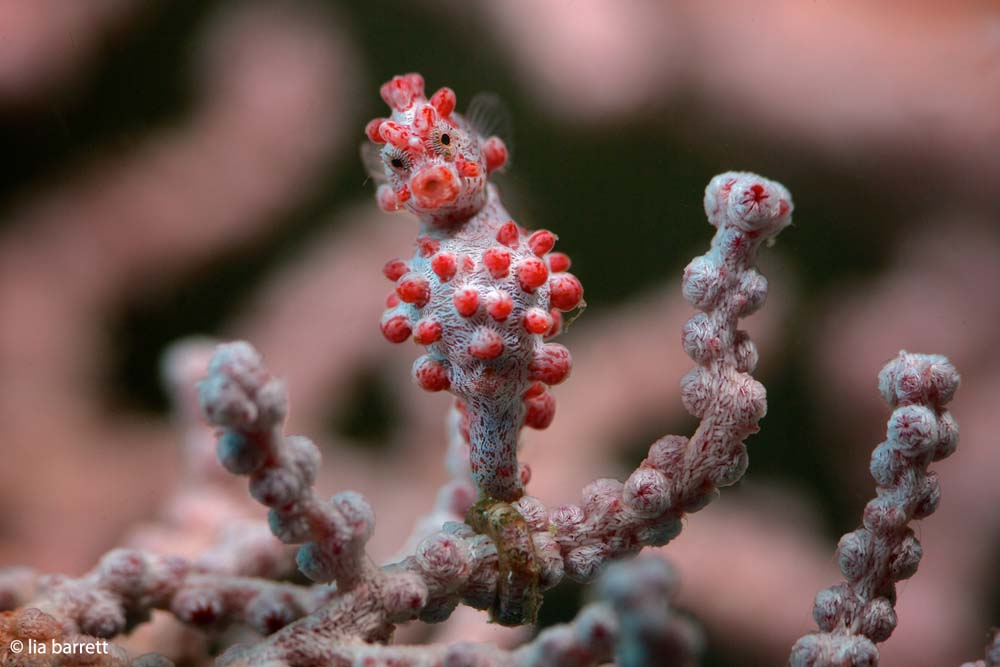
Pygmy Seahorse (Hippocampus Bargibanti) photographed at Bunaken Island
Orange
Our healthy reefs are home to numerous species of anemones which in turn are habitat for numerous species of anemonefish. These brave little fish are extremely protective of their host anemones which they live in symbiosis with. The anemone provides the anemonefish with protection from predators among its stinging tentacles. Anemonefish are hermaphrodites meaning that they have the ability to change from male to female! Anemones and anemonefish are found at all of our dive sites here in North Sulawesi.
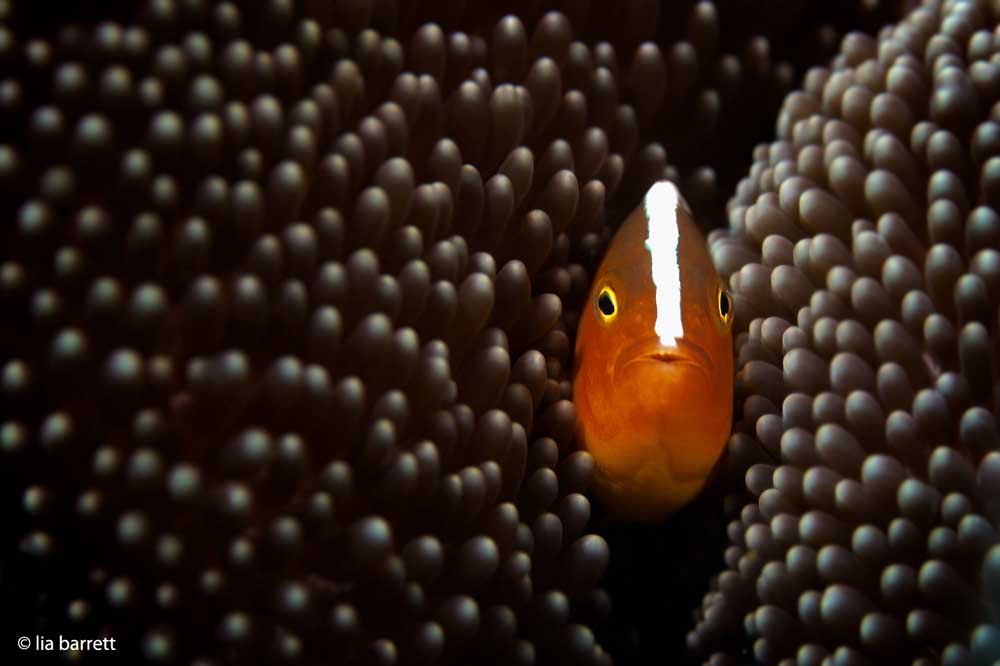
Orange Skunk Clownfish (Amphiprion sandaracinos) photographed around Bangka Island
Yellow
Yellow boxfish (Ostracion cubicus) go through several color phases as they mature. The juvenile phase pictured here is a vibrant yellow with black spots as they mature they turn a dark green and the spots change to a silvery blue, the intermediate adult phase is a lighter tan to yellowish brown shade with black ringed blueish spots and their final coloration as adults is a brownish purple with indistinct spots. No matter what color phase they are transitioning through they are easy to identify from their squared, cubed body shapes. We see yellow box fish at all of our dive sites around Bunaken, Manado Bay, Bangka and Lembeh – the juveniles are extremely shy so despite their bright color they can be tricky to spot.
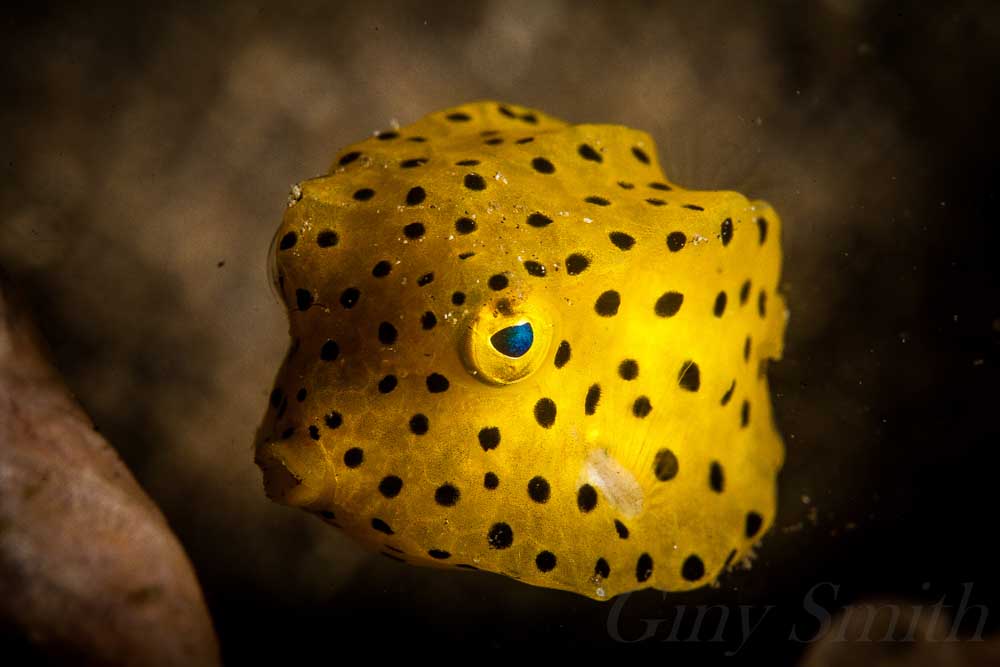
Yellow Boxfish (Ostracion cubicus) photographed around Bangka Island
Green
Okay, we admit it – green turtles are not the “greenist” colored species that we have here in North Sulawesi but because we have such a healthy population and consider ourselves very lucky to see them on almost every dive at Bunaken we didn’t think we could leave them out – they are such a highlight of the diving here. Green turtles (Chelonia mydas) are actually named “green” due to the color of the fat underneath their shells and they can grow up to an impressive 300kg. The turtles at our dive sites here are very docile and we have very close encounters with them especially at Lekuan 1 which our turtle “hotspot”.
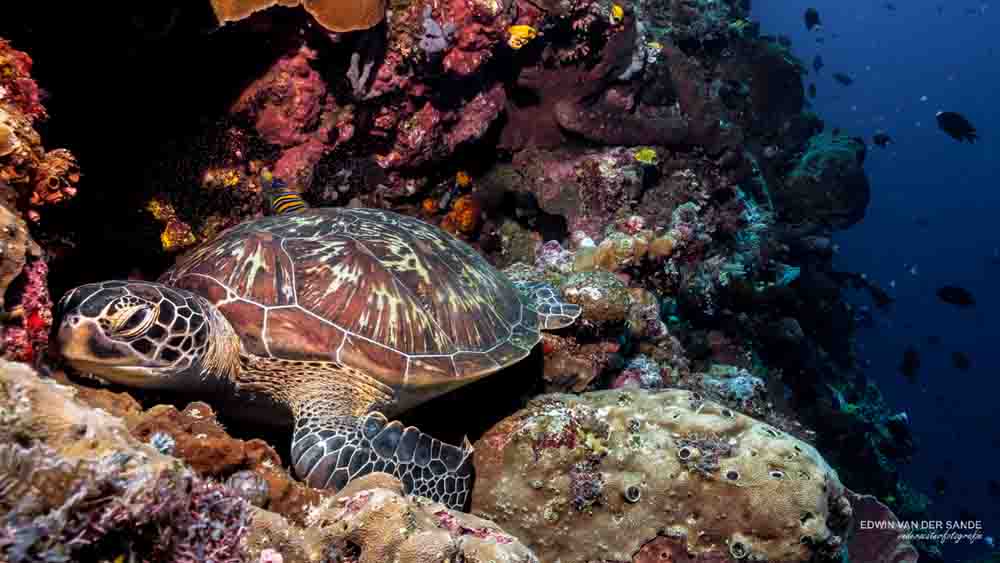
Green Sea Turtle (Chelonia mydas) photographed at Lekuan 1 at Bunaken Island
Blue
Blue ribbon eels (Rhinomuraena quaesita) don’t start out or finish their lives blue! The juveniles are actually gender-less and black with yellow markings before they transition to this male blue and yellow phase followed by a later all yellow female phase. Ribbon eels can grow up to almost 1 meter and live solitary or in pairs. They favor dive sites with sandy patches where they can burrow in to the sand. All three of our House Reefs (Manado, Bangka and Lembeh) are great spots for finding these bright little critters.

Blue Ribbon eel (Rhinomuraena quaesita) found in Manado Bay
Indigo
Red toothed triggerfish (Odonus niger) take their name from their distinctive red front teeth. At Bunaken we see huge swarms of this species just below the surface during our safety stops. Sachiko’s is a hotspot for these little triggerfish where they swarm by the thousands but we see them across all Bunaken dive sites because the waters are so nutrient rich. This species feeds on zooplankton so it enjoys being out in the blue where it can feed in the current stream. Their red teeth are not always visible but they are easy to identify by to their distinctive “c” shaped tails.
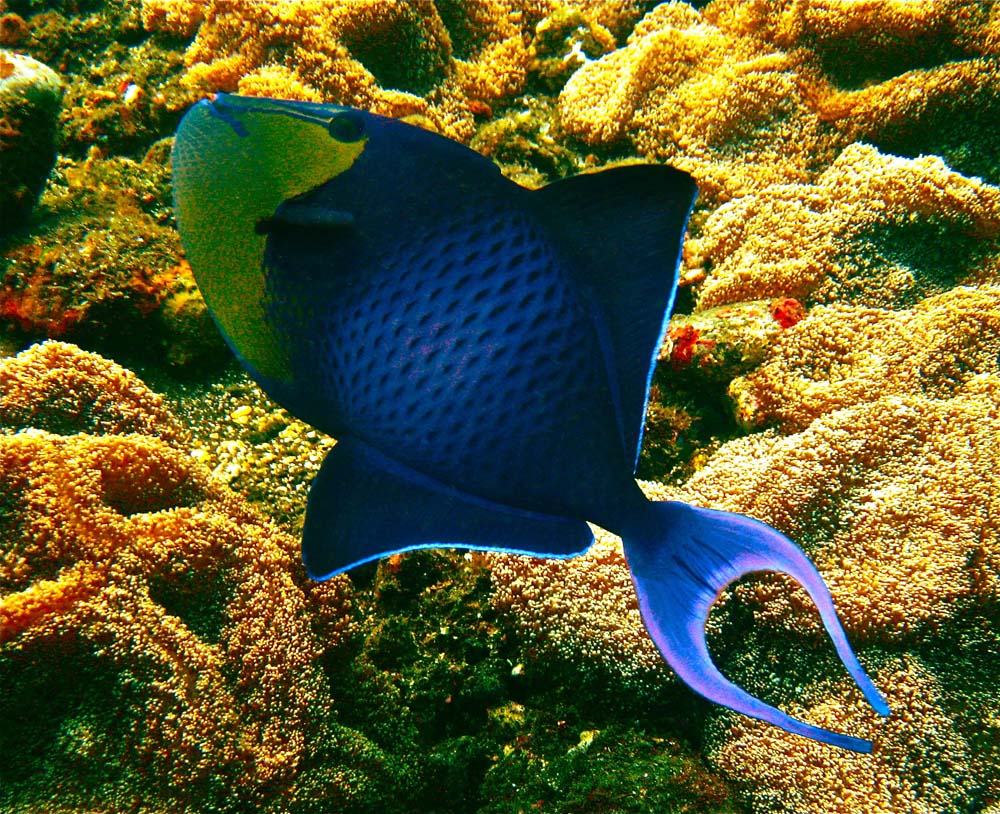
Red Toothed Triggerfish (Odonus niger) pictured here at Sachicko’s at Bunaken Island.
Violet
When diving at some of the best dive sites in Indonesia you should be prepared to see some of the brightest and boldest of colours and this Hypselodoris apolegma nudibranch is a perfect example. Although it is possible to see these nudibranch at all dive sites here in North Sulawesi some of the best sites for sightings are in the southern end of the Bunaken Marine Park at dive sites such as Tanjung Kelapa in Poopoh.
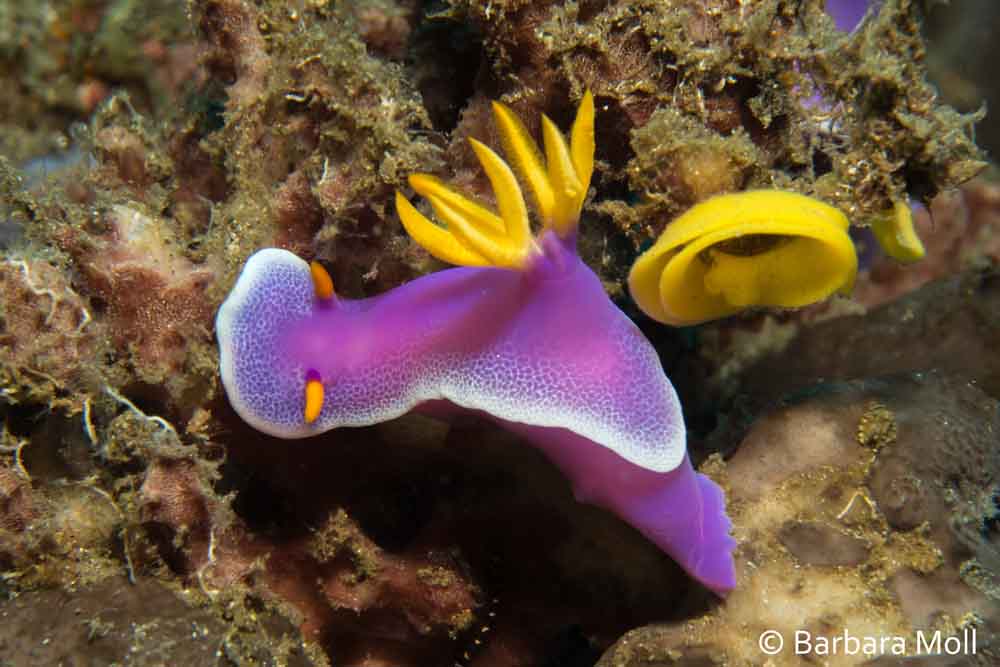
Hypselodoris Apolegma found at Tanjung Kelapa in Manado Bay
If you’re ready to experience a “rainbow on the reef” and mind blowing colors then come and join us. You’ll be diving with the pioneers of diving in North Sulawesi and if you visit all three of our resorts on a “Passport to Paradise” (Bunaken, Bangka, Lembeh) you’ll have over 150 dive sites to choose from and the chance to see over 1,500 species of fish. Three dive destinations which offer epic walls, stunning reefs and the world’s best muck diving in just one trip? Yes!
Book your North Sulawesi dive adventure now at: reservations@murexdive.com


